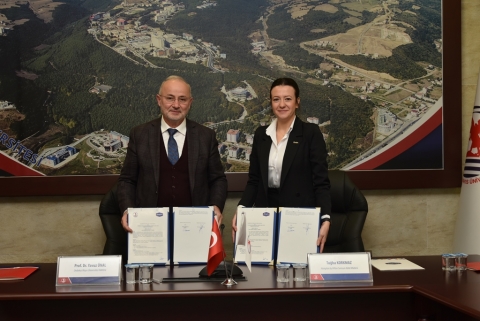Cultural Heritage Will be Documented in Samsun Atakum and İlkadım Districts
"The Archaeological Survey of Akalan Castle and its Surroundings" was initiated with the permission of the Ministry of Culture and Tourism's General Directorate of Cultural Heritage and Museums, under the supervision of Ondokuz Mayıs University Faculty of Arts and Sciences Archeology Department Lecturer Dr Michael Deniz Yılmaz. The new research of Ondokuz Mayıs University (OMU) regarding the protection of the cultural assets in its hometown is being carried out with the support of the OMU Rectorate and OMU Faculty of Arts and Sciences Deanery. The research will be focused on Akalan Castle, an Iron Age settlement, and will be carried out for the detection and documentation of archaeological and cultural assets in Samsun Province, Atakum and Ilkadım Districts. OMU Faculty of Arts and Sciences Archeology Department undergraduate and graduate students participate in the research as team members, and students have the opportunity to put their theoretical knowledge into practice.
Within the scope of the surface survey, in addition to the identification and documentation of cultural properties in Samsun's Atakum and İlkadım Districts, several studies will be carried out on the previously identified and registered cultural properties in order to document their current ruination levels and the progress of their ruination by comparing their current status with previous studies.
Akalan Castle
The first archaeological excavations in Akalan Castle in the Atakum District of Samsun were carried out by Mr Toduraki Makridi in 1906 on behalf of the Müze-i Hümâyun (Istanbul Archeology Museum), and it was the first archaeological excavation carried out in the Black Sea Region of our country. In the period after this date, Akalan Castle was documented by different researchers within the scope of a limited number of surveys.
The castle shows the features of a fortified settlement belonging to the Iron Age, which stands out with its walls that are approximately 1 kilometre long and surround an area measuring 350*70 meters. The walls, which were built with large stones in the Cyclopian style, have been preserved up to 5 meters high in places and were built with a slope varying between 55-80 degrees.
The settlement is also of great importance in terms of presenting pottery findings revealing the cultural and commercial relations between Western Anatolia, Central Anatolia and the Black Sea Regions.
Archeology Education and Field Studies
Students who continue their education in the Department of Archeology at undergraduate and graduate levels must participate in field studies to practically reinforce the knowledge they have acquired in the lessons. The research project, as another research of OMU Archeology Department within the borders of Samsun Province, creates a new field of study for undergraduate and graduate students of OMU Archeology Department to reinforce their learning and knowledge.



















